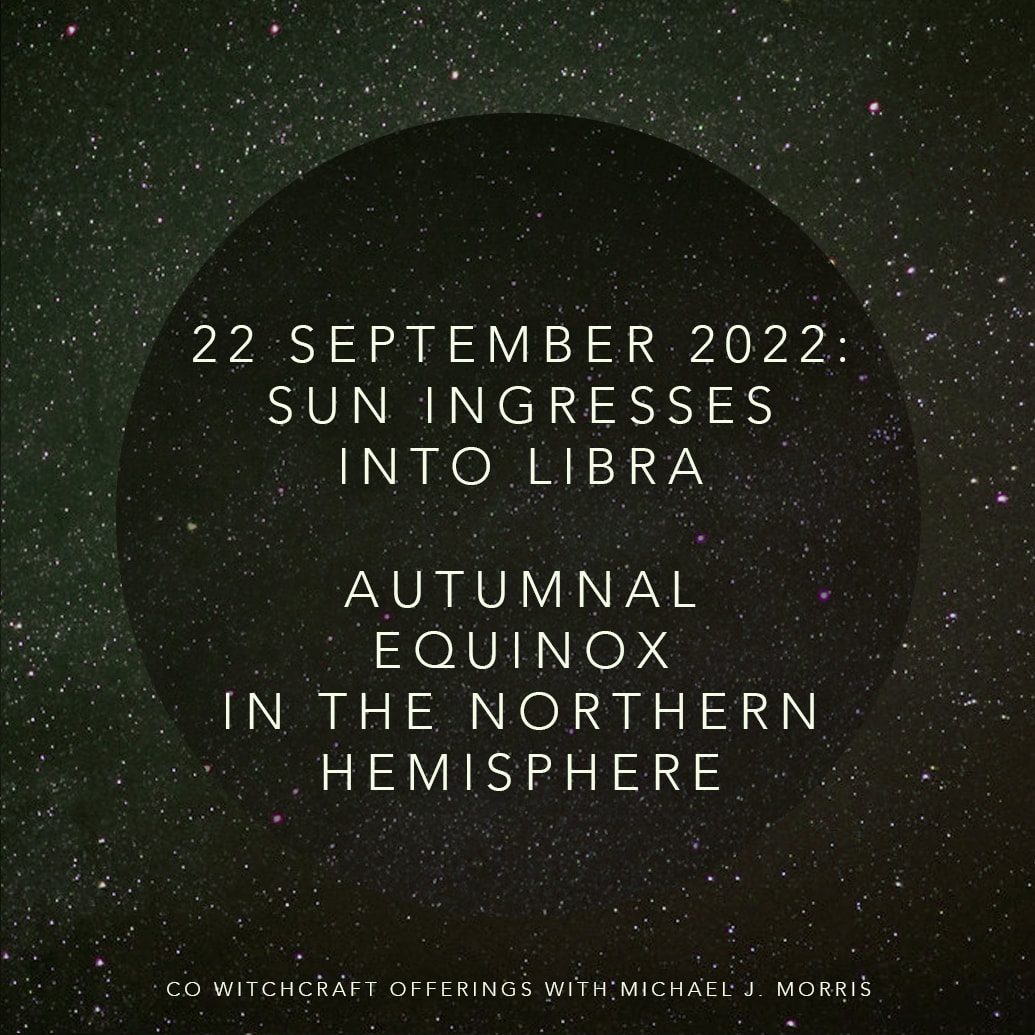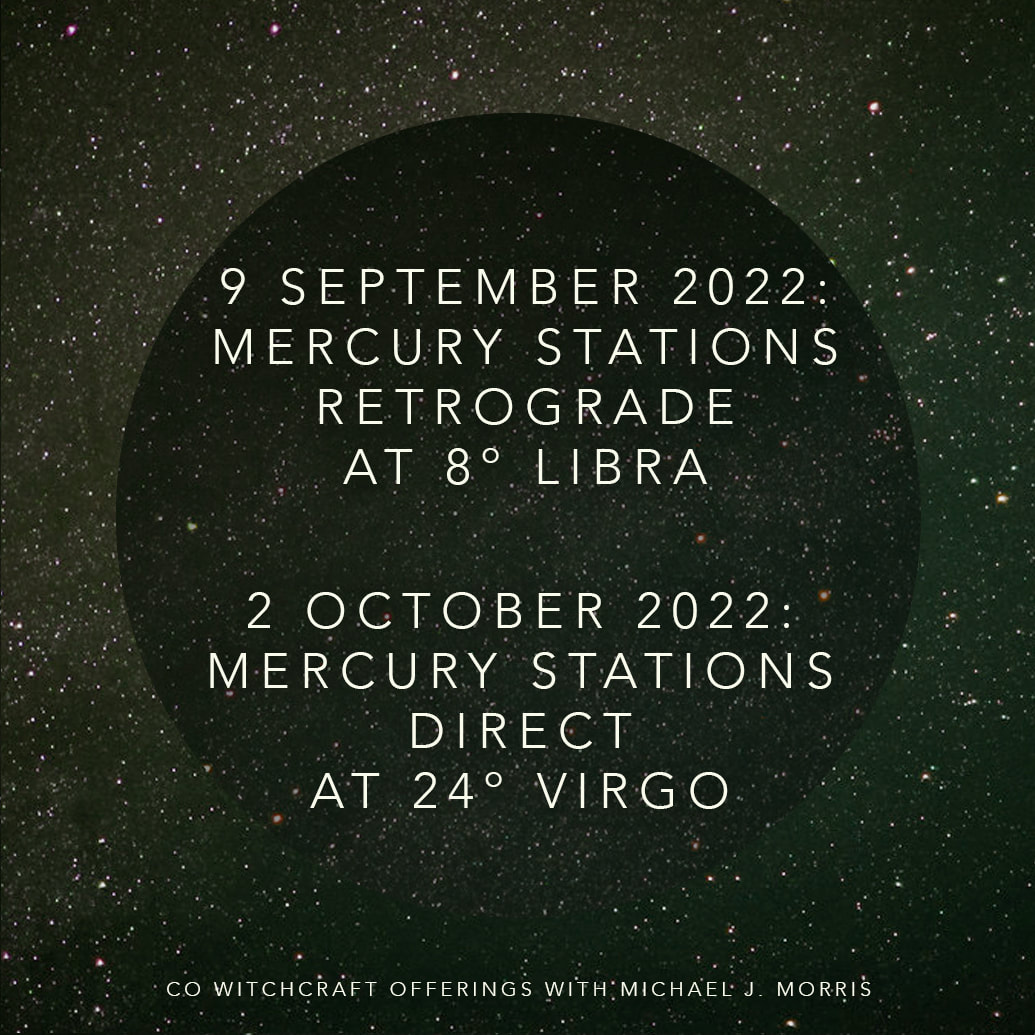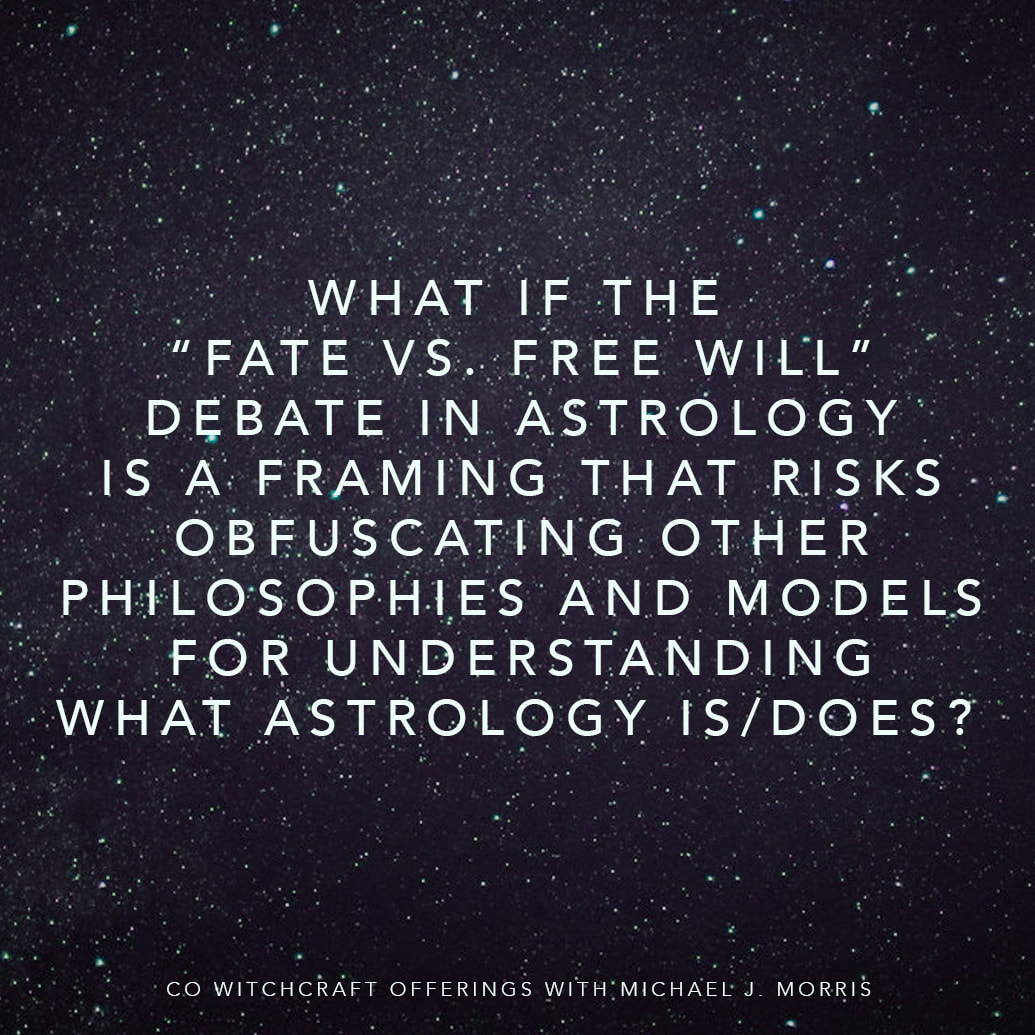|
The Sun ingresses into Libra at 9:03pm eastern on Thursday, September 22, marking the equinox and the start of autumn in the northern hemisphere. It is a time when the hours of day and night are equal in length, as the Sun crosses the celestial equator. Libra is described as the sign of the Sun’s fall or depression, in part because as it moves through this sign, its light and power diminish. Libra is also a sign concerned with cooperation, collaboration, and holding the needs of others together in balance and harmony, whereas the Sun is a singular, centralizing force around which all others orbit. In Libra, the Sun is challenged with distributing attention away from the one and toward others, building relations rather than blazing ahead alone.
This year as the Sun enters Libra, it moves immediately into a conjunction with Mercury, still in its retrograde cycle. Their conjunction will be exact on September 23, a condition known as cazimi when Mercury is in the heart of the Sun. The equinox is likely to bring some fresh flash of clarity or understanding amidst weeks when communication and the transmission of ideas have a tendency to go awry. At the Sun’s ingress, its ruler Venus is in the sign of its fall as well, in Virgo, in aversion to the Sun and applying to an opposition with Neptune which goes exact on September 24. Venus opposing Neptune can be a time when our relational boundaries feel blurry or eroded, when the practical details of how to love well may be drowned out by projections and unachievable ideals. As we start this new season focused on cooperation, collaboration, and building relations with others, remember that boundaries support our capacity to love and that love is more than a feeling or a fantasy. bell hooks writes, “Love is an action, a participatory emotion. Whether we are engaged in a process of self-love or of loving others we must move beyond the realm of feeling to actualize love. This is why it is useful to see love as a practice. When we act, we need not feel inadequate or powerless; we can trust that there are concrete steps to take on love’s path.”
0 Comments
On September 9, Mercury stations retrograde for the third time in 2022. The retrograde station is at 8º Libra, and Mercury will move back to 24º Virgo where it will station direct on October 2.
There is a theme across the majority of Mercury’s retrogrades this year, starting in an air sign, then stationing direct in an earth sign—a pattern that could invite us to consider the tangible, material implications of our thoughts and ideas, grounding our perspectives in the material conditions of our lives. When Mercury stations retrograde in Libra, it is opposing Jupiter in Aries, trine Mars in Gemini, and exchanging signs with Venus in Virgo. Mercury in Libra can describe connecting with collaborators, being in conversation with co-conspirators, and finding ways to translate across our differences to find ways of moving forward that take many voices and needs into consideration. With the opposition to Jupiter in Aries, we may find the task of collective action overwhelming in some way or struggle to make connections between the small scale and the larger scale. The trine with Mars in Gemini could indicate that it is through struggling with our fundamental interdependence and wrestling to find the words with which to meet one another that we might finally come together. With Mercury and Venus exchanging signs in aversion to one another—unable to witness each other—a theme of this retrograde could be asking whose voices are left out because they seem to share nothing in common with us? The retrograde is a time of reflection, review, and re-evaluation, returning to terrain we’ve already covered to discover a different way forward. Mercury and Venus will meet up in Virgo on September 26, finally having found common ground. Then when Mercury stations direct on October 2, it will be time to make the most efficient use of our available materials to put our plans into action. When Mercury returns to 8º Libra and clears its retrograde shadow on October 17, it will once again be co-present Venus, suggesting that it is possible to reach some kind of alignment with those who may have seemed entirely incongruous at the start. [Image reads: 9 September 2022 Mercury stations retrograde at 8º Libra, 2 October 2022 Mercury stations direct at 24º Virgo, in light lettering on a dark green starfield] What if the “fate vs. free will” debate in astrology is a framing that risks obfuscating other philosophies and models for understanding what astrology is/does?
I prefer instead contemplating astrology as an assemblage of agencies both human and more-than-human that is always emerging from a cloud of determinacy and indeterminacy. Astrology is a human practice of co-creating meaning with that which is more than human—most notably the sky, the planets, the stars, the asteroids, light, motion, and our place on earth, but also the body, language, myth, archetypes, technology, social systems, cultural biases, etc. None of these forces are static, stable, resolute, or lifeless. They each have their own movements, their trajectories without teleologies, their irresolvable aggregations of affects, impressions, and relations—all of which conspire to generate the possibility of cosmic stories in which we implicated. Astrology is co-created, always made, never found, even if it is made from what is found. Astrology is not simply what we find in the world or sky but what we make of what we find—and this is a “we” that is never only human and making through which we are also made. In this assemblage of forces, materials, and intelligences, much is made possible while much remains impossible. Some things are determined in advance, not simply BY the planets but WITH the planets, and also with social systems rooted in domination, exploitation, oppression, and violence—for example—that enable some ways of living while foreclosing others. Any notion of radical free will that does not account for the constraints of social systems and power acting on and through us—let alone the larger ecological conditions including the cosmos which vastly exceed human control—is naïve at best and willfully delusional at worst. But any notion of an entirely deterministic fatedness that does not recognize the multiplicity of possibilities within even the most seemingly predictable systems misses the exuberant potentiality of life itself. The planets and other celestial bodies describe powerful currents within the assemblage we call astrology and demonstrate an uncanny capacity for correlation with terrestrial experiences and events. Yet all throughout the astrological traditions, the planets (and signs and houses, etc.) remain persistently multivalent, irreducible to any single signification or delineation. Even at its most precise, predictive astrology remains inherently unpredictable, and this is in part because the relations we center within our astrological awareness are only ever part of the assemblage. Rather than fate or free will, we are always one movement within a much larger choreography that is always partially constrained yet never fully determined in advance, a constellation of emergent possibilities that must be met in the living moment, irreducible to calculations or representations but to which we bring our calculations and representations and our felt sensations and intimations and breath and WiFi and two-dimensional charts of the sky and all our shelves and stacks of books and our late night conversations with loved ones and the words of our teachers and glimpses of shining lights between the clouds and our grasping at the ineffable and our sparks of recognition and and and and and this is where astrology happens. |
AuthorMichael J. Morris is a witch, an astrologer, a tarot reader, an artist, a writer, and a teacher. Categories
All
Archives
April 2024
|
- Home
- About
- Bookings
- Offerings
- Events
- Tutoring and Mentorship
-
Downloads
- Transits and Transgender Liberation
- Feminist Astrology and the Moon
- Feminist Astrology: Mars, Violence, and War
- Celestial Kinship
- Introduction to Ritual Workshop + Beltane Ritual
- Minor Asteroids in the Birth Chart and Ritual
- Astrology Guide for 2022
- The Atomic Age, Urgency, Danger, and Kinship: Astrology and Climate Collapse
- Asteroids in Astrology: Nuance, Subtlety, and Direction
- Tarot Workshop with Michael J. Morris
- Astrology as an Artistic Practice: As It Is Made, So It Makes
- Astrology Guide for 2021
- Celestial Corporeality: Astrology and the Body
- Astrology Consultations as Feminist Praxis
- Embodying Astrological Archetypes
- Resources
- Blog
- Testimonials
- Policies
- Gratitude
Copyright © 2020




 RSS Feed
RSS Feed